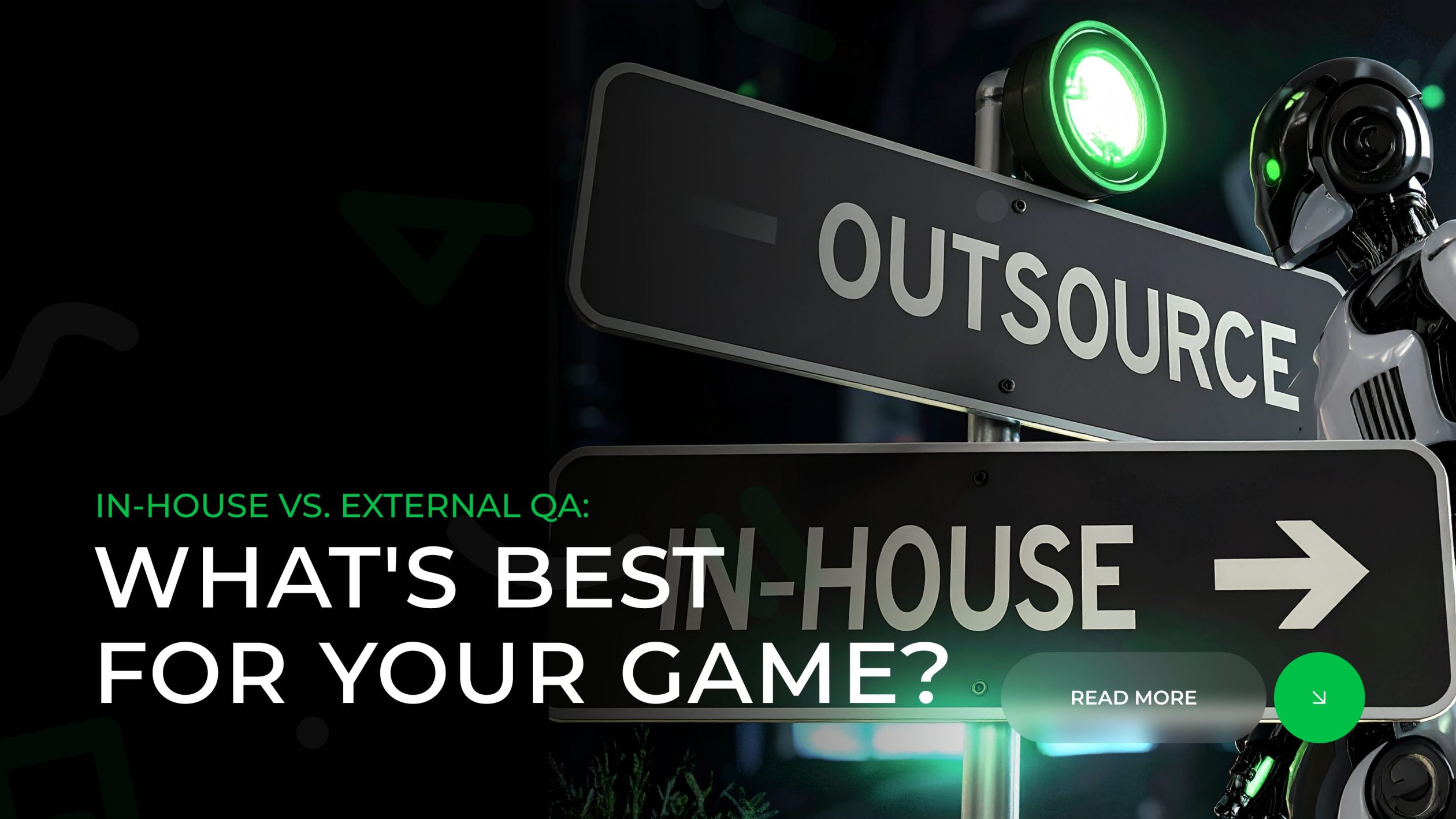With increasing platform complexity, larger game worlds, and always-online features, Quality Assurance (QA) is no longer an afterthought — it’s a strategic pillar of game development.
But here’s the decision every studio faces sooner or later:
Do we build an in-house QA team or outsource to a dedicated QA partner?
In this article, we’ll give you:
- A clear, side-by-side comparison of both models
- Real-world insights into when and why studios choose external QA
- A free downloadable strategy pack to help you evaluate your own needs
Cost, speed, and coverage benchmarks based on actual QA projects
🔍 Detailed Comparison: In-House QA vs. External QA
| Feature / Capability | In-House QA | External QA |
| Setup Time | 2–6 months (hiring, onboarding, tooling) | 1–2 weeks (ready-made team with tools + workflows) |
| Cost Structure | Fixed salaries, tools, HR overhead | Flexible: hourly, project-based, or dedicated teams |
| Team Scalability | Limited by internal resources | Instantly scalable for crunch periods or large-scale testing |
| Tooling & Infrastructure | Needs internal setup (Jira, test benches, devices) | Provided by vendor — saves CAPEX |
| Platform Certification Expertise | Usually lacking; often requires additional vendors | Built-in expertise for TRC/XR and console compliance |
| Multiplayer & Co-op Testing | Difficult to simulate complex multiplayer edge cases | Cross-region testers, automation, and real-time co-op flows |
| Regression Testing | Resource-intensive, takes away from new feature testing | Offloaded to external team — keeps internal focus on development |
| Bias / Tunnel Vision | High (same testers test same systems daily) | Fresh testers = unbiased feedback, better UX insight |
| Availability | Limited to studio hours/timezone | Can run 24/7 with global QA network |
🎯 5 Scenarios Where External QA Outperforms In-House
- Pre-Launch Crunch
You’re 4–6 weeks from release, and your internal team is overwhelmed. External QA adds capacity without long onboarding. - Platform Certification (PS5, Xbox, Steam)
TRC/XR testing is specialized, and external teams often have prebuilt test matrices and experience with platform-specific bugs. - Multiplayer Games
Co-op and PvP require geographically distributed testers to simulate real-world latency, desync, voice chat, and more. - Live Service / Frequent Updates
Regression testing every patch is a massive burden. Offloading this allows your team to stay focused on new features. - Indie Studios Scaling Up
External QA offers enterprise-grade quality without the need to hire and manage a large internal team.
💸 Budget Snapshot: Internal vs. External QA
| Expense Category | In-House QA (avg/month) | External QA (avg/project) |
| Salaries (QA + Lead) | $12,000–$18,000 | – |
| Tools & Infrastructure | $1,500–$3,000 | Included |
| Onboarding & Training | $2,000+ | $0 (teams are pre-trained) |
| Scalability | Rigid | Dynamic |
| Total Monthly Estimate | $15,000–$22,000+ | $4,000–$10,000/project |
📌 Note: External QA teams often provide better hourly utilization — no idle costs during quiet phases.
🧠 Still Deciding? Download This Free Strategy Pack
To help you make an informed choice, we’ve prepared a free downloadable pack:
✅ In-House vs. External QA Decision Matrix
✅ QA Budget Estimation Template (Google Sheets & Excel)
✅ Platform Testing Readiness Checklist
✅ Cost Calculator: Hourly vs. Monthly Scenarios
Final Thought 💬
There’s no “one size fits all” when it comes to QA — but if you’re developing for multiple platforms, need fast testing cycles, or don’t want to build a QA department from scratch, external QA can accelerate development and improve final quality.
Need help with multiplayer, console certification, or live-service testing?
Let’s talk → contact@snoopgame.net












